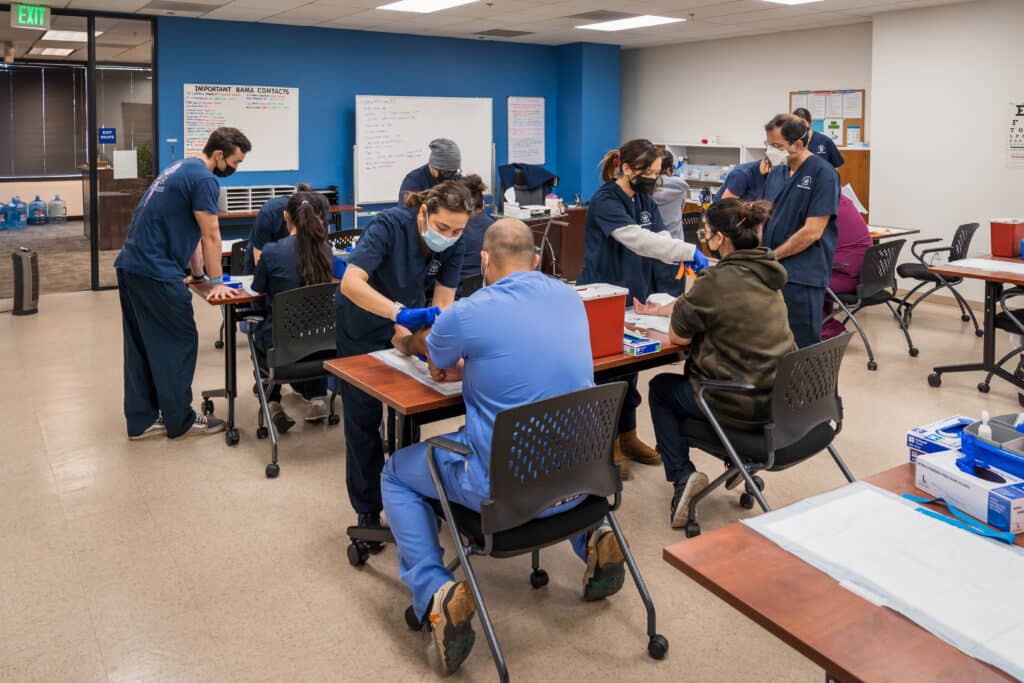The Greatest Guide To Northeast Medical Institute - New Haven Campus Phlebotomy Course & Cna Class
The Greatest Guide To Northeast Medical Institute - New Haven Campus Phlebotomy Course & Cna Class
Blog Article
Things about Northeast Medical Institute - New Haven Campus Phlebotomy Course & Cna Class
Table of ContentsNortheast Medical Institute - New Haven Campus Phlebotomy Course & Cna Class Things To Know Before You Get ThisThe Ultimate Guide To Northeast Medical Institute - New Haven Campus Phlebotomy Course & Cna Class9 Easy Facts About Northeast Medical Institute - New Haven Campus Phlebotomy Course & Cna Class ShownThe Northeast Medical Institute - New Haven Campus Phlebotomy Course & Cna Class IdeasThe Ultimate Guide To Northeast Medical Institute - New Haven Campus Phlebotomy Course & Cna ClassWhat Does Northeast Medical Institute - New Haven Campus Phlebotomy Course & Cna Class Mean?
The use of such tools must be gone along with by other infection avoidance and control methods, and training in their usage.For setups with reduced sources, price is a driving element in purchase of safety-engineered gadgets - CNA Classes. Where safety-engineered tools are not offered, proficient use a needle and syringe is acceptable. Unintentional exposure and specific details regarding an incident must be tape-recorded in a register. Assistance services must be promoted for those who undergo unexpected exposure.
One of the vital markers of quality of care in phlebotomy is the involvement and teamwork of the person; this is equally helpful to both the health worker and the individual. Clear information either composed or spoken ought to be offered to every individual that undertakes phlebotomy. Annex F gives example text for explaining the blood-sampling procedure to a client. In the blood-sampling room for an outpatient division or center, offer a comfortable reclining couch with an arm remainder.
Northeast Medical Institute - New Haven Campus Phlebotomy Course & Cna Class - An Overview
Guarantee that the signs for blood sampling are plainly defined, either in a created protocol or in recorded directions (e.g. in a laboratory type). At all times, comply with the strategies for infection avoidance and control listed in Table 2.2. Infection prevention and control techniques. Gather all the tools required for the procedure and location it within safe and simple reach on a tray or cart, guaranteeing that all the items are plainly noticeable.
Where the individual is adult and mindful, adhere to the actions described below. Introduce yourself to the client, and ask the individual to mention their full name. Check that the laboratory type matches the client's identity (i.e. match the individual's details with the research laboratory kind, to ensure accurate recognition). Ask whether the license has allergies, phobias or has ever fainted throughout previous injections or blood attracts.
Make the individual comfortable in a supine position (if possible). Area a tidy paper or towel under the client's arm. Talk about the test to be executed (see Annex F) and get spoken approval. The patient has a right to reject an examination at any time prior to the blood sampling, so it is necessary to make certain that the individual has recognized the treatment.
Northeast Medical Institute - New Haven Campus Phlebotomy Course & Cna Class for Beginners
Expand the client's arm and evaluate the antecubital fossa or lower arm. Locate a capillary of an excellent size that is noticeable, straight and clear. The diagram in Area 2.3, shows typical placements of the vessels, but several variants are feasible. The median cubital capillary lies between muscular tissues and is generally the most easy to pierce.
DO NOT insert the needle where capillaries are diverting, since this enhances the possibility of a haematoma. The capillary needs to show up without applying the tourniquet. Locating the vein will help in figuring out the right dimension of needle. Apply the tourniquet regarding 45 finger widths above the venepuncture site and re-examine the vein.
Haemolysis, contamination and visibility of intravenous liquid and medicine can all change the results (39. Nursing staff and physicians might access main venous lines for samplings complying with procedures. However, specimens from main lines bring a danger of contamination or erroneous research laboratory examination results (https://www.easel.ly/browserEasel/14490693). It serves, yet not optimal, to draw see blood samplings when first presenting an in-dwelling venous device, prior to connecting the cannula to the intravenous liquids.
A Biased View of Northeast Medical Institute - New Haven Campus Phlebotomy Course & Cna Class
Permit the location to completely dry. Failure to allow sufficient contact time boosts the danger of contamination. DO NOT touch the cleaned up website; particularly, DO NOT position a finger over the blood vessel to guide the shaft of the exposed needle. It the site is touched, repeat the disinfection. Perform venepuncture as follows.
Ask the patient to form a hand so the blood vessels are a lot more noticeable. Get in the capillary quickly at a 30 degree angle or much less, and proceed to introduce the needle along the capillary at the easiest angle of access - CNA Training. Once enough blood has actually been gathered, release the tourniquet prior to withdrawing the needle
6 Simple Techniques For Northeast Medical Institute - New Haven Campus Phlebotomy Course & Cna Class
Withdraw the needle delicately and apply mild stress to the site with a tidy gauze or completely dry cotton-wool ball. Ask the person to hold the gauze or cotton wool in location, with the arm expanded and raised. Ask the person NOT to bend the arm, because doing so causes a haematoma.

An Unbiased View of Northeast Medical Institute - New Haven Campus Phlebotomy Course & Cna Class
Where possible, keep the tubes in a rack and relocate the rack in the direction of you - https://pxhere.com/en/photographer/4295682. If the sample tube does not have a rubber stopper, infuse exceptionally gradually into the tube as decreasing the stress and rate utilized to move the sampling decreases the threat of haemolysis.

Report this page